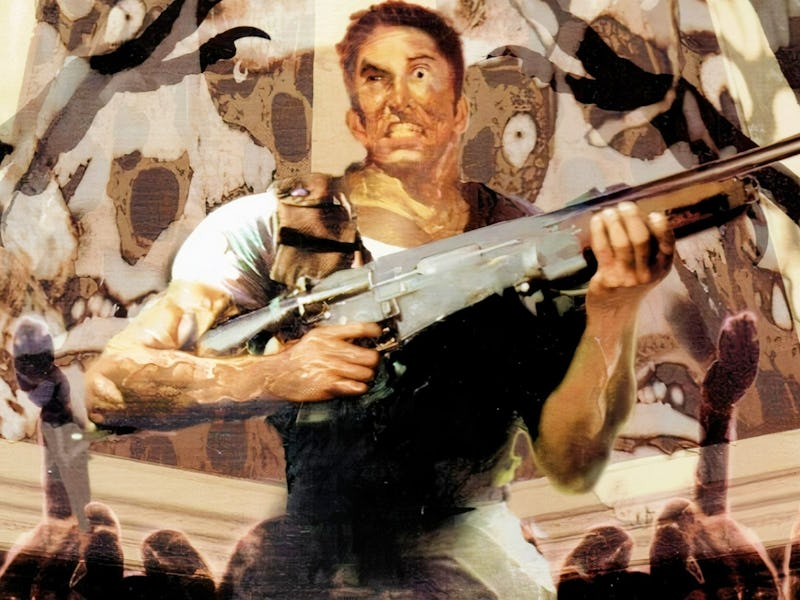A Clunky Horror Game Changed the Zombie Genre Forever 27 Years Ago
The Master of Unlocking.

It’s nearly impossible to imagine horror games without Resident Evil, a series that feels like it’s been a quintessential part of the genre forever. Survival horror definitely existed before 1996, but with the release of the first Resident Evil on the original PlayStation, the genre saw a massive boom unlike anything before. 27 years later, Resident Evil is one of the most recognizable brands in horror across media at large. The franchise has grown by leaps and bounds over time, but its critical key to success can still be drawn to that first revolutionary game.
If you’re unfamiliar, the first Resident Evil starts after a bizarre string of murders hit the relatively quiet Raccoon City somewhere in the midwest. An elite police team known as S.T.A.R.S. is sent to investigate the Arklay Mountains, and after Bravo team’s helicopter crashes, Alpha is sent in as backup. The team members, including Chris Redfield and Jill Valentine, encounter horrific creatures and are forced to take refuge in the mysterious Spencer Mansion — where even worse horrors await.
Even in 1996, Resident Evil somehow managed to feel both incredibly cheesy and utterly terrifying all at once. The game effortlessly flips between the two. You might nearly wet your pants as zombie dogs crash through a window, but minutes later, Ms. Valentine will narrowly avoid getting crushed by falling debri and lament the fact that she almost became a “Jill sandwich.”
Cringely dialogue and live-action cutscenes gave Resident Evil a kin of B-movie charm, something that would become integral to the series’ identity.
This absurd tonal whiplash would end up being one of Resident Evil’s biggest keys to success, to this day the series still leans into that vibe. The reason it works so well, however, is because both aspects of the first Resident Evil were given extra love and attention.
Character designs and personalities lean towards kitschy, like the delightfully hammy and villainous Wesker who wears sunglasses even in pitch-black darkness. At the same time, Spencer Mansion at large feels like an absurdist puzzle box created by a rich madman, packed to the brim with deranged traps and puzzles. Then you have the now-iconic enemy designs that include from the eerily reptilian hunters to the hulking monstrosity of the Tyrant.
Enhancing all of this is an oppressive atmosphere that permeates every little location and detail. That just might be the single biggest innovation of Resident Evil: The vibes were unlike anything players had seen before.
Resident Evil was one of the very first 3D games Capcom ever developed, and just like The Legend of Zelda: Ocarina of Time and Final Fantasy VII, it was a major player in showing how video games moved on from 2D sprite-based graphics. Capcom did an incredible job using the hardware of the PlayStation to render realistic environments that not only felt spooky but vitally also felt lived-in, like a place you could see in real life.
Resident Evil’s moody and oppressive atmosphere is perfected in the 2002 GameCube remake.
That moody atmosphere and sense of mystery tied directly into the survival horror elements, making your sense of desperation all the more permeable. You’d need to poke around every dusty corner of the mansion to scrape together every bit of ammo you could find, or find the solution to a puzzle you passed an hour ago.
Resident Evil didn’t invent survival horror, and it drew liberal inspiration from past titles like Sweet Home. However, it iterated on the formula in such a spectacular way that it set a new standard. In the late ‘90s and early 2000s, there were countless imitators, like Deep Fear. Even later all-time greats like Dead Space and The Last of Us owe a lot to how Resident Evil redefined horror.
By today’s standards, the original PS1 game definitely feels clunky, but the 2002 remake perfected virtually every gameplay aspect. And it still holds up to this day. It is absolutely worth playing the original version if you can get your hands on it, simply to experience such a pivotal moment in gaming history.
This article was originally published on